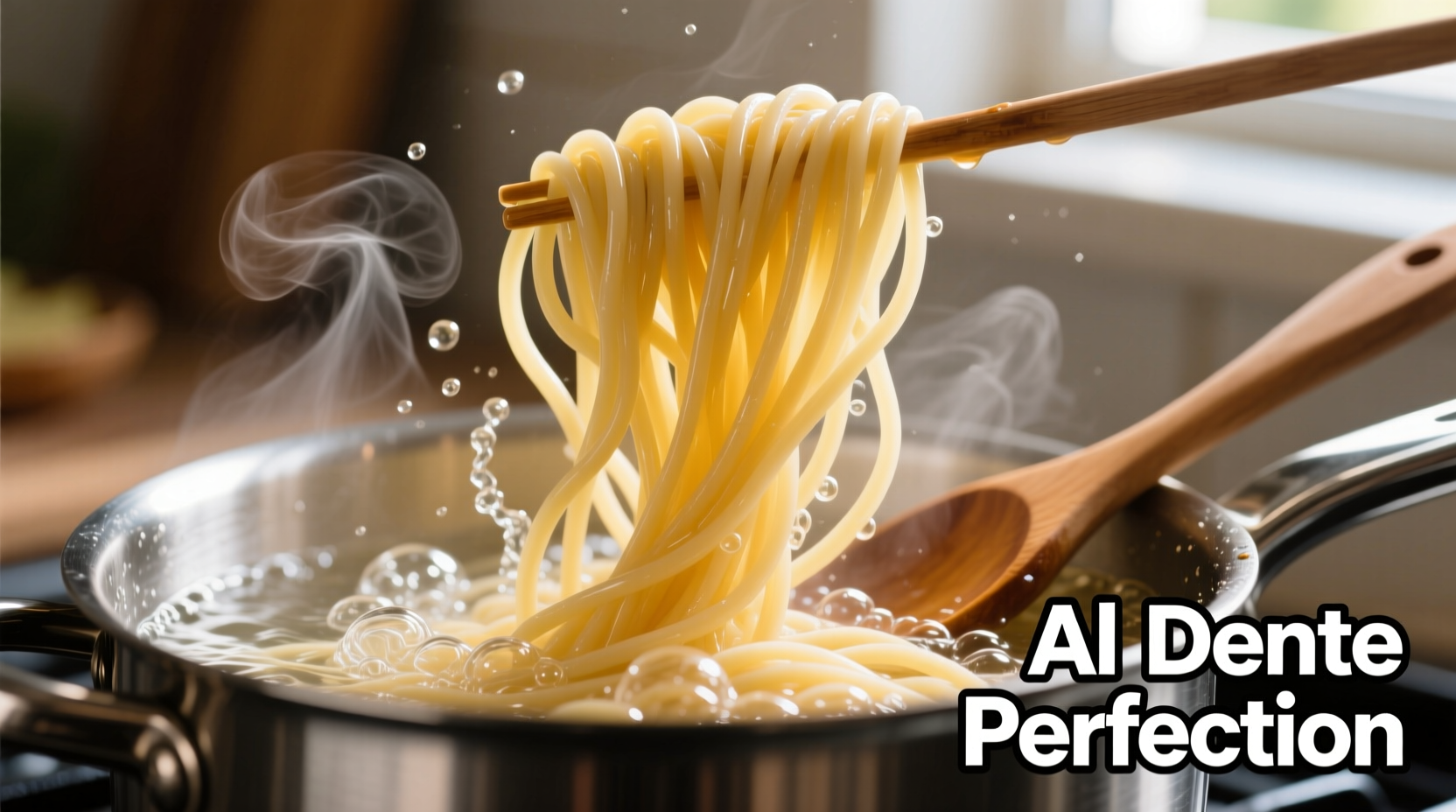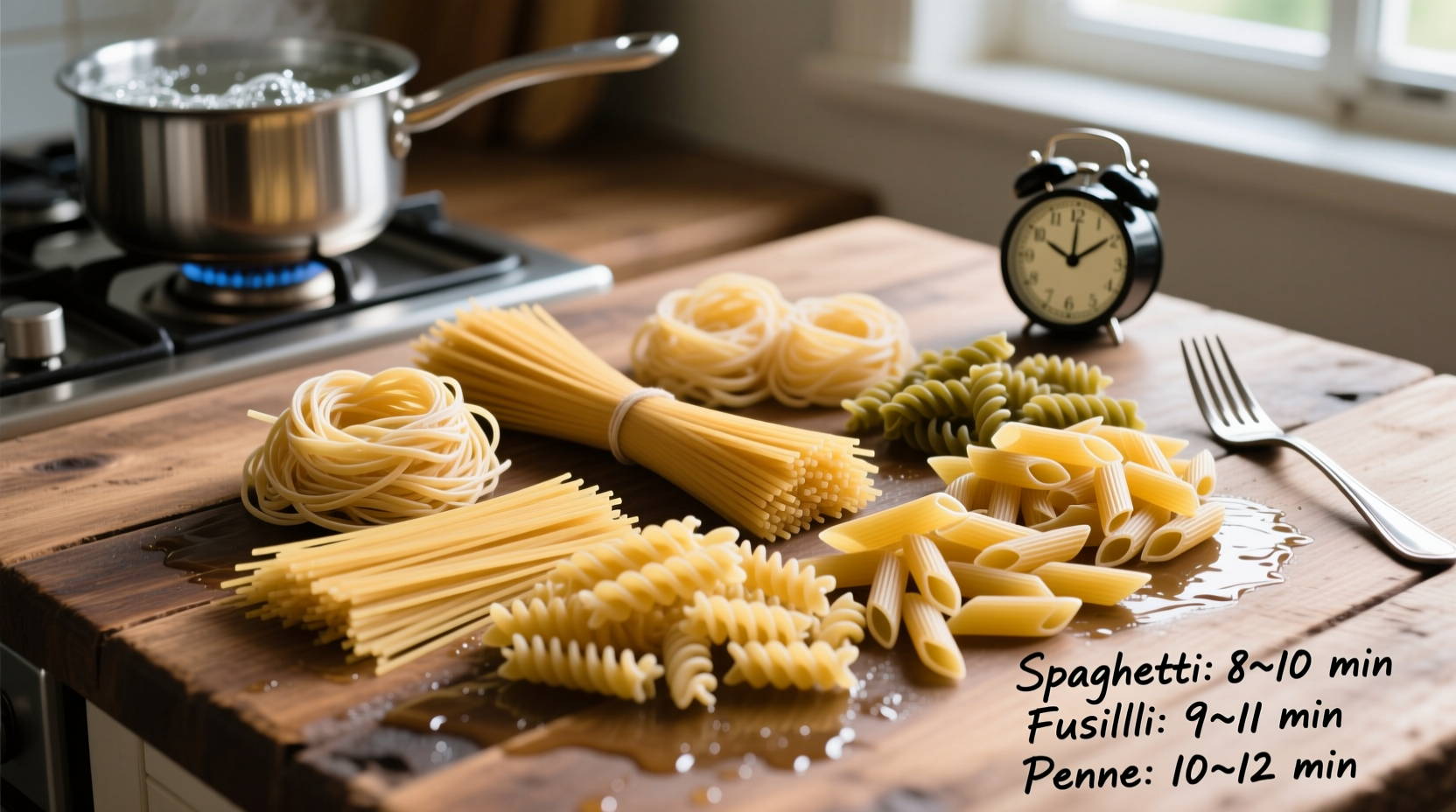The exact cooking time for pasta depends on type and thickness, but most dried pasta varieties take 8-12 minutes in boiling water. Fresh pasta cooks much faster—typically 2-4 minutes. Always check package instructions first, then test for doneness starting 1-2 minutes before the suggested time for perfect al dente texture.
Master Pasta Cooking Times: Your Complete Reference Guide
Nothing ruins a perfect Italian meal faster than overcooked or undercooked pasta. Whether you're making a quick weeknight dinner or preparing for guests, knowing exactly how long pasta takes to cook transforms your results from mediocre to restaurant-quality. This guide delivers precise timing information backed by culinary science—no more guessing or package-dependent results.
Essential Pasta Cooking Time Reference
| Pasta Type | Standard Cooking Time | Al Dente Test Time | Key Characteristics |
|---|---|---|---|
| Spaghetti (dried) | 8-12 minutes | 7-10 minutes | Round strands, medium thickness |
| Fettuccine (dried) | 10-12 minutes | 9-11 minutes | Flat ribbons, wider surface area |
| Penne (dried) | 11-13 minutes | 10-12 minutes | Tubular shape, holds sauce well |
| Farfalle (dried) | 12-14 minutes | 11-13 minutes | Bow-tie shape, thicker center |
| Fresh pasta (any type) | 2-4 minutes | 1.5-3 minutes | Higher moisture content, delicate |
| Whole wheat pasta | 12-15 minutes | 11-14 minutes | Denser texture, requires extra time |
The Science Behind Perfect Pasta Timing
Understanding why pasta needs specific cooking times helps you become more adaptable in the kitchen. When pasta hits boiling water, two critical processes occur simultaneously:
- Starch gelatinization - Water penetrates the pasta, causing starch granules to swell and absorb moisture
- Protein network formation - Gluten proteins set into a stable structure that prevents mushiness
Thicker pasta shapes like rigatoni or lasagna noodles require more time for water to penetrate to the center, while delicate shapes like angel hair cook rapidly. The al dente texture—firm to the bite—occurs when the outer layer is fully cooked but the very center retains a tiny bit of resistance.

Your Step-by-Step Perfect Pasta Method
Water and Salt Ratio Matters Most
Many home cooks underestimate how crucial the water-to-pasta ratio is for proper cooking. For every pound of pasta:
- Use 4-6 quarts of water (minimum)
- Add 1.5-2 tablespoons of coarse salt
- Never add oil to the water (it prevents sauce adhesion)
Timing Technique for Foolproof Results
- Bring water to a rolling boil before adding pasta
- Stir immediately after adding pasta to prevent sticking
- Set timer for 1-2 minutes less than package instructions
- Begin testing for doneness at this early mark
- Fish out a piece, cool slightly, and bite to check texture
- Drain immediately when perfect—don't over-drain
Professional chefs recommend reserving 1 cup of pasta water before draining. This starchy liquid works magic when finishing your sauce, helping it cling perfectly to the pasta.
Special Cases and Context Boundaries
Certain situations require adjusting standard pasta cooking duration guidelines. These context boundaries significantly impact timing:
- High altitude cooking: Above 3,000 feet, increase cooking time by 25-50% as water boils at lower temperatures
- Gluten-free pasta: Typically requires precise timing—often 1-2 minutes less than suggested to avoid mushiness
- Reheated pasta: Already-cooked pasta needs just 30-60 seconds in boiling water to refresh
- "Shock and hold" method: For events, cook pasta 75% done, shock in ice water, then finish in sauce just before serving
The USDA's Food Safety and Inspection Service confirms that proper pasta cooking eliminates potential pathogens while achieving optimal texture. Their guidelines align with the timing ranges presented here for food safety and quality.
Pro Tips for Consistent Results Every Time
- The pinch test: For long strands, pinch pasta against the side of the pot—when it offers slight resistance, it's nearly done
- Resist the lid: Never cover pasta after adding it to water—this causes foaming and potential boil-overs
- Undercook slightly: Pasta continues cooking from residual heat after draining—pull it 30 seconds early for perfect final texture
- Rescue overcooked pasta: Briefly fry in olive oil with garlic to restore some texture and flavor
Remember that how long pasta takes to cook perfectly depends more on visual and textural cues than strict timing. Package instructions provide a starting point, but your judgment determines the final result. With practice, you'll develop the instinct to recognize perfect doneness without checking the clock.
Frequently Asked Questions
How do I know when pasta is perfectly al dente?
Perfect al dente pasta offers slight resistance when bitten but isn't hard or crunchy in the center. The exterior should be fully cooked while the very center retains a tiny dot of paler color. Test 1-2 minutes before the suggested cooking time ends, as pasta continues cooking from residual heat after draining.
Does pasta cooking time change when making pasta salad?
Yes, cook pasta 1-2 minutes less than usual for pasta salad. The cooling process continues cooking the pasta, and you want it firmer since it won't be served with sauce that softens it further. Rinse under cold water immediately after draining to stop the cooking process completely.
Why does my pasta always stick together while cooking?
Pasta sticks primarily due to insufficient water or not stirring enough. Use at least 4 quarts of water per pound of pasta and stir immediately after adding pasta to the pot. Never add oil to the cooking water—it prevents sauce from adhering properly later. If pasta does stick, gently separate strands with a fork while still in the hot water.
Can I cook pasta directly in sauce instead of boiling water?
Yes, but you'll need to adjust liquid ratios and cooking time. Add extra liquid (about 25% more) to compensate for pasta absorbing moisture. Start checking for doneness around 10-12 minutes for dried pasta. This method creates exceptional sauce adhesion but requires careful monitoring to prevent burning or uneven cooking.











 浙公网安备
33010002000092号
浙公网安备
33010002000092号 浙B2-20120091-4
浙B2-20120091-4